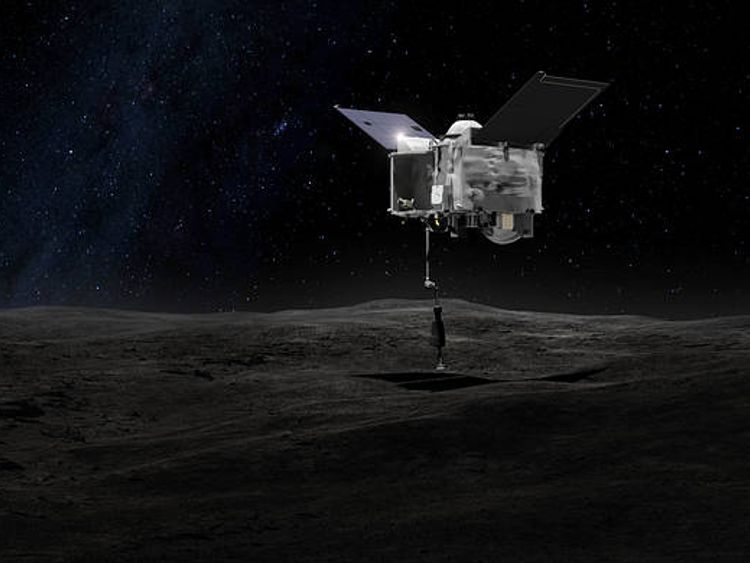An unmanned NASA spacecraft has sent a signal back to Earth after making a successful fly-by past the most distant world ever studied by mankind.
Around 10 hours after reaching the icy world of Ultima Thule, which lies one billion miles beyond Pluto, in the early part of New Year's Day, the New Horizons vessel got in touch with scientists back home.
The "phone home" signal took far longer to reach its destination than your average WhatsApp message because of just how far it had to travel, with Ultima Thule lying four billion miles from Earth.
It is roughly 20 miles long and shaped like a giant peanut.
According to missions operations manager Alice Bowman, data from the world provided by New Horizons will help NASA to "understand the origins of our solar system" – and clear images are expected later on Wednesday.
Before it sent back its first signal to confirm everything was in working order, its fly-by had sparked scenes of jubilation at the Johns Hopkins Applied Physics Laboratory in Maryland.
Lead scientist Alan Stern summed up just why his team were so excited by the mission.
"Ultima Thule is in such a deep freeze that it is perfectly preserved from its original formation," he explained.
"Everything we are going to learn about Ultima – from its composition to its geology to how it was originally assembled, whether it has satellites and an atmosphere and those kinds of things – are going to teach us about the original formation conditions of objects in the solar system."
The milestone came hours after a different NASA spacecraft broke records by successfully going into orbit around an ancient asteroid.

The Osiris-Rex spacecraft is now orbiting Bennu – a tiny asteroid that is just 500m (1,600ft) long and found 70 million miles from Earth.
Bennu – one of the oldest asteroids known to NASA – is the smallest celestial body to ever be orbited by a spacecraft, and the laps being taken by Osiris-Rex are barely one mile above the surface.
Its objective is to grab samples of gravel from the asteroid in 2020 and return them to Earth by 2023 – a manoeuvre described as a "gentle high-five".
The $800m (£630m) unmanned spaceship launched two years ago from Cape Canaveral in Florida and only arrived at its destination on 3 December.

After several weeks of study, Osiris-Rex fired its thrusters to bring it into orbit around the tiny asteroid at 7.43pm UK time on New Year's Eve.
NASA has described the achievement as a "leap for humankind" because no spacecraft has ever "circled so close to such a small space object – one with barely enough gravity to keep a vehicle in a stable orbit".
Bennu has a gravity force just five-millionths as strong as Earth's and from now until mid-February, Osiris-Rex will use five scientific instruments to map it in high resolution, enabling scientists to decide where to take the sample.
More from Science & Tech
After that, a reverse vacuum and a circular device similar to a car filter will be used to collect about 60g of material.
Bennu is regarded as potentially dangerous, as there is a one in 2,700 chance of it colliding with Earth in 2135.
[contf] [contfnew] 
Sky News
[contfnewc] [contfnewc]






